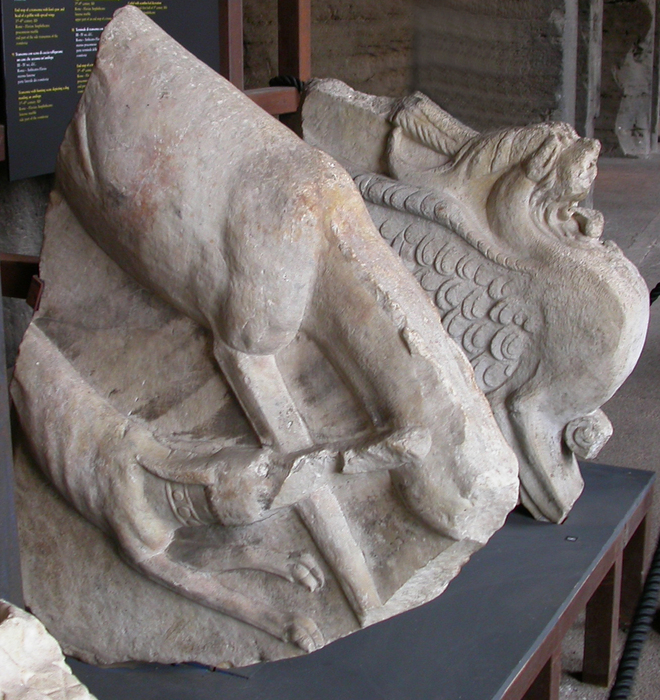
The Colosseum was once filled with marble statuary and painted stucco. Very little remains of the decor of the Colosseum itself. There were statues lining the outer hallways of the building, but only these pieces seem to have been recovered here.

The Colosseum was once filled with marble statuary and painted stucco. Very little remains of the decor of the Colosseum itself. There were statues lining the outer hallways of the building, but only these pieces seem to have been recovered here.
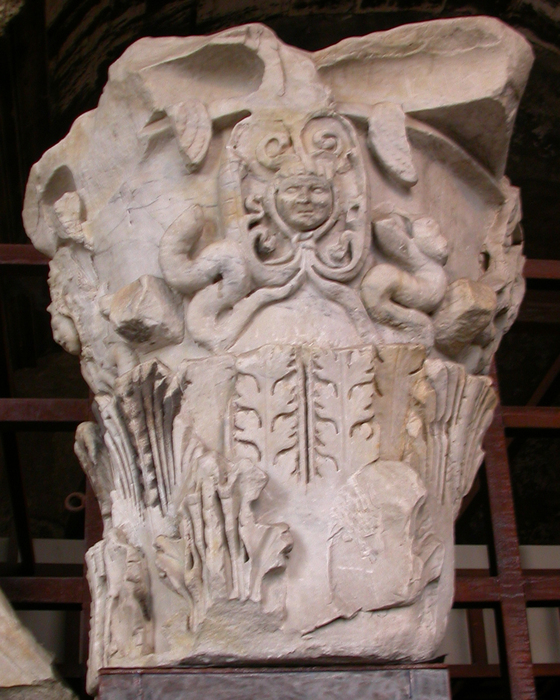
This piece may have as well, it didn't have a sign. Most column pieces seem to feature abstract designs, but this one clearly shows a stylized head of Medusa.
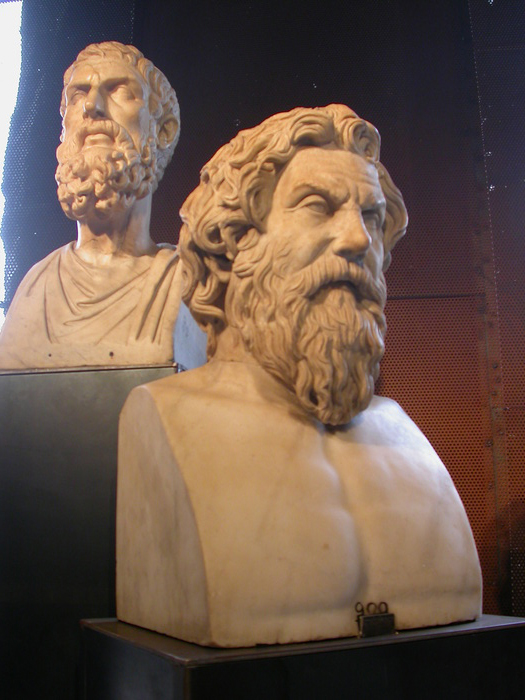
Epicurus and Anthisthenes. Epicurus was a Greek philosopher who lived around 300 BC. This bust is a Roman copy of a Greek original from the 2nd century BC, thus it may be a fairly contemporary and fairly accurate portrait of him. He taught that the principle philosophy was to attain a happy and tranquil life, that the measure of good and bad was by pleasure and pain, that there is no afterlife and the gods do not interfere in the lives of humans but let them go on their own path.
Anthisthenes lived around 400 BC, and though this depiction is from the 1st century AD, it is similar to others from much earlier. He was also a philosopher, but very nearly the opposite of Epicurus. He was a student of Socrates and like his teacher believed that the path to virtue was through rejection of worldly things. However, unlike Socrates, he extended this to include such things as manners and decent clothing. He started a school of this philosophy in the Cynosarges, and he and his followers were known as Cynics.
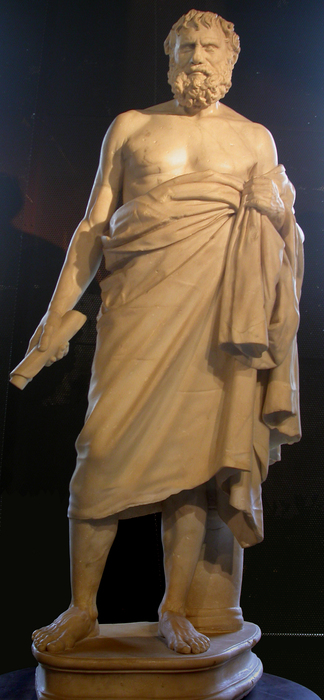
This is a statue of an unknown Cynic. The scroll was a later addition, and would be an unlikely accessory for a Cynic. Cynic in Greek means dog. The meaning of the term was probably layered: both from their founding place of study, a disparaging term used by the Athenians, and a mascot for the Cynics themselves. Many of them were homeless by choice, living in tubs at crossroads, prosthetizing to anyone near enough to hear them. They were purposefully unkempt, as this Cynic exemplifies. Philosophically, they believed that happiness was to be achieved by living a life of virtue and in agreement with nature. Virtue was to be achieved by denial of wealth, fame, and power. Suffering is caused by assigning false value to these things, which in nature have no value.
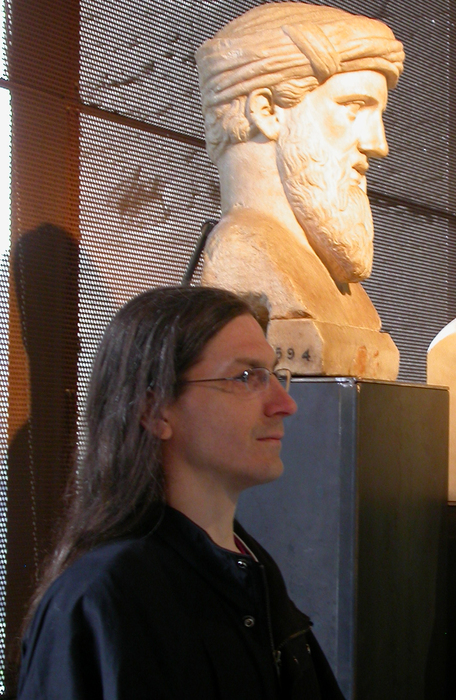
Eric next to a bust of Pythagoras. The bust is a Roman copy of a 3rd or 4th century BC original, though Pythagoras himself lived more than a hundred years before then. Pythagoras is probably best known for the Pythagorean Theorum, the formula that describes the relationship between the lengths of the sides of any right triangle. His followers would eventually lay the foundations of Euclid's The Elements, describing Euclidian geometry. However, this genius did not spring from an atmosphere of rationality. Pythagoras' followers formed a strict and secretive cult. Only the inner circle was allowed to see Pythagoras himself, his teachings were reflected to the outer circle in the form of cryptic sayings. Later, Pythagoras' wife led the inner circle. She was a mathematitican in her own right, and is said to have written about the golden mean, although none of her work has survived.
Eric has a particular affection for the Pythagorean theorum,
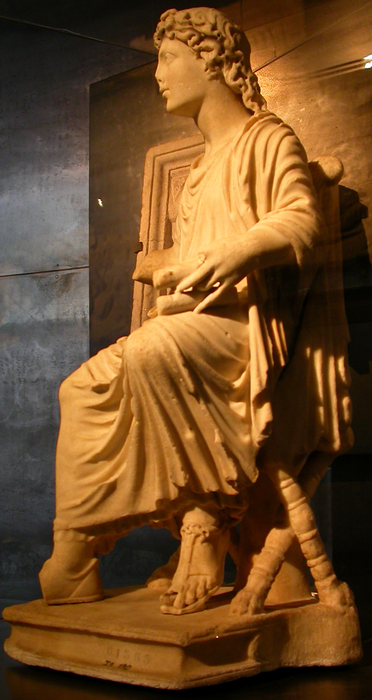
Towards the end of the Western Roman empire, Christianity became widespread. Unsurprisingly, Romans made statues of this new hero in the same tradition as their old ones. This statue is of "Jesus as the Teacher," and is from the 3rd century AD. Is this an accurate depiction? Probably not, as the face looks very Roman. The 3rd century is fairly early in the spread of Christianity in Rome, though. It was not until the 4th century that Christianity would be legal in the Roman empire.